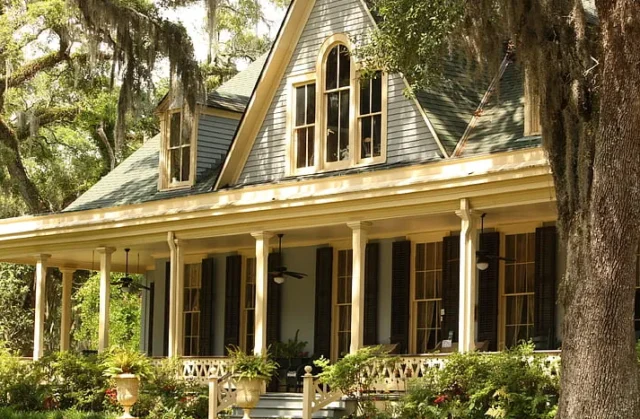 My entire family was invited to a graduation party over the weekend. Such an invitation is nothing out of the ordinary; what made this invitation unique was that the graduate was a third-generation member of a long-standing friendship – his grandparents were neighbors of my parents for more than 40 years.
My entire family was invited to a graduation party over the weekend. Such an invitation is nothing out of the ordinary; what made this invitation unique was that the graduate was a third-generation member of a long-standing friendship – his grandparents were neighbors of my parents for more than 40 years.
This invitation would naturally seem rather strange to the casual observer – a coattail acquaintance, if you will, out of whom the graduate was simply trying to squeeze another gift.
Nothing could be further from the truth, for although the graduate’s grandparents – Bob and Jane, my family’s longtime neighbors – are now deceased, the connection with the family remains, forged by careful cultivation over a relationship of years.
To have such a close relationship with neighbors is odd these days. In fact, most of us think of neighbors as those individuals to whom we nod briefly while headed to the car, or the voices we hear behind the privacy fence erected between yards. So how did my family manage to win such a longtime—and positive—relationship with neighbors, one that is now in its third generation?
After pondering, I’ve come to realize that it all boils down to love, kindness, and respect – attitudes that came from both sides of our quiet neighborhood street. Those attitudes played out in the following five ways:
~ Liberal With Praise ~
There was rarely a cross word that passed between our two neighboring families – if any at all. Instead, I grew up under the sunshine of Bob’s and Jane’s smiles and their words of praise directed toward our family – words we happily returned. They were a second set of grandparents, the type in whose eyes you could do no wrong. They rejoiced in our successes, they wept over our sorrows, and they laughed with us over the funny moments in life.
~ Finding Common Values ~
The households on either side of the street didn’t share the same political values, but we did share the same love of family, faith, and freedom, and we chose to capitalize on those values instead of focusing on those we didn’t share.
In doing so, we were able to have ample conversation material—conversations that only strengthened in later years as ideas and beliefs changed and both families found themselves on the same side of the political aisle.
~ Included in Gatherings ~
Bob and Jane were some of the most hospitable people I’ve known. Rather than stiff-arming my family and keeping us in the neighbor zone, they treated us like family, inviting us to baby showers and birthday parties along with their sons, daughters, and other in-laws.
A certain smell of bacon sends me back to Jane’s kitchen, where, as a little girl, I would be invited to breakfast along with my mom, where Jane unwittingly served as a type of mentor—an older woman reaching out to befriend a younger.
~ Sharing is Caring ~
There’s nothing like a plate of cookies or a handful of garden tomatoes to show a neighbor that you care, and in the case of our two households, little gifts such as these often went back and forth across the street. Were these gestures necessary? No, but they showed we cared about one another and were willing to give of the fruit of our labors for the other’s benefit.
~ Avoiding Annoyances ~
By this point, you might get the idea that both my family and Bob and Jane’s lucked out and had the perfect neighbors. But that’s not true. Both sides of the street had their problems—it was how we dealt with them that made the difference.
For example, my family could have taken offense at the business Bob and Jane ran out of their home. Was it inconvenient sometimes, with all the extra traffic it brought? Sure. But we decided to roll with it and not make a fuss. My family also did things that I’m sure were annoyances to Bob and Jane. But they either looked the other way or kindly asked us to make adjustments to remedy the difficulty. Either way, both sides of the street knew cross words or offenses weren’t worth losing the neighborly relationship we had built.
American author Wendell Berry once said, “A viable neighborhood is a community: and a viable community is made up of neighbors who cherish and protect what they have in common.” I can attest to the truth of that, because growing up, I experienced the beauty of good neighbors – ones who looked out for each other and built a solid, safe community.
As I’ve grown older, I’ve realized just how valuable – and rare – that is. Maybe neighborliness has disappeared because we’re too busy or maybe because we’re only focused on ourselves and our own needs. Or perhaps it has vanished in the same proportion as local freedom has retreated.
Author Alexis de Tocqueville observed this fact in “Democracy in America,” writing, “Local freedom, then, which leads a great number of citizens to value the affection of their neighbors and of their kindred, perpetually brings men together and forces them to help one another in spite of the propensities which sever them.”
Given this, the best path toward restoring our communities and neighborhoods isn’t just another government project. Instead, such restoration will come only when we commit to the simple restoration of our cherished freedoms while also taking advantage of the freedom to openly and happily interact with our neighbors while we still have it.
Written by Annie Holmquist for The Epoch Times ~ August 31, 2024
~ The Author ~
 Annie Holmquist is a cultural commentator hailing from America’s heartland who loves classic books, architecture, music, and values. Annie was a longtime contributor to Intellectual Takeout.
Annie Holmquist is a cultural commentator hailing from America’s heartland who loves classic books, architecture, music, and values. Annie was a longtime contributor to Intellectual Takeout.
Annie received a B.A. in Biblical Studies from the University of Northwestern-St. Paul. She also brings 20+ years of experience as a music educator and a volunteer teacher – particularly with inner city children – to the table in her research and writing and is a cultural commentator hailing from America’s heartland who loves classic books, architecture, music, and values.
